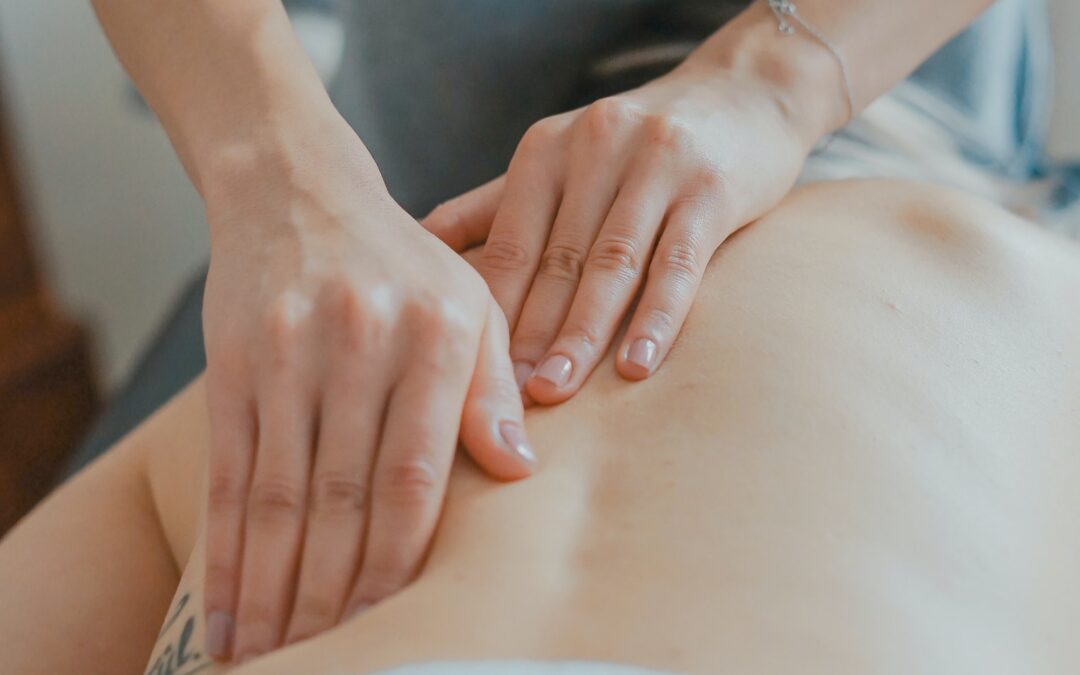Often those with endometriosis find their pelvic floor muscles and nervous system become sensitive which increases pain. The recent Australian clinical guidelines for the treatment of endometriosis recognises physiotherapy as a promising option for improving pelvic pain (1).
What many don’t realise is that physiotherapy is not one specific treatment, rather a menu of treatment options you can choose from.
Following a detailed medical history and examination, your physio will work with you to reduce the sensitivity and overactivity in your pelvis through a range of treatment options outlined below.
What are the different types of physiotherapy treatments and terms?
A
Anatomical education – Understanding the anatomy (structure) of your muscles, organs and joints of the pelvis, abdomen and spine helps your physio to find areas that are painful, aid in decreasing that pain and improve relaxation.
B
Breathing exercises –Breathwork can improve whole body and nervous system relaxation. In addition, it can increase the mobility and relaxation of the pelvic floor via the relationship between the diaphragm (breathing muscle in the chest) and the pelvic floor muscles.
C
Conditioning exercise – Exercise is so important in endometriosis. Strength and conditioning exercises can be triggering for some, as they can aggravate symptoms. Your physio will work with you to identify the type, intensity and time in your cycle for exercise so you have a customised plan to see improvements in pain, stress and inflammation. A small randmosed study of 27 women found that 9 weeks (two sessions per week) of supervised exercise with a physio improved current pelvic pain by 1.5 on a 10 point scale, and these results were maintained at year after the program.(2)
D
Defecation (bowel opening) coordination and bowel management – bowel problems are common in people with endometriosis and constipation can be made worse by overactive or poorly co-ordinated pelvic floor muscles. Optimal positioning for bowel opening and improving pelvic floor relaxation and co-ordination can help.
E
Electromyography (EMG) and pressure biofeedback exercises – EMG uses sensors (either on the outside of the vulval area or internal vaginal sensors) to measure the electrical activity of the pelvic floor muscles. Pressure biofeedback uses vaginal pressure sensors to determine the tightness and co-ordination of the pelvic floor. Both are aimed at improving pelvic floor relaxation and co-ordination.
G
Goal setting – One of the most important things you will do in physiotherapy is define your goals for your treatment and more holistically for your life.
H
Heat – Your physio will discuss heat as well as other self-care strategies to assist pain management. Always be careful when using heat, since burns can occur on areas where this is placed!
K
Knowledge of pain science – It’s important to understand that pain is an experience that is both sensory and emotional. Structural factors (such as endometriosis lesions and pelvic floor tightness) can impact your pain experience, as well as other factors including thoughts, feelings and quality of sleep.
L
Learning about the causes of pain with intercourse (dyspareunia) and modifications that can improve it (including positions, devices such as the Ohnut, and lubricants). You may feel awkward speaking about sex with your physio at first. Don’t be. Pain from endometriosis during and after sex is quite common and something your physio will want to help you with.
M
Mindfulness and meditation – Psychological and mind body practices show positive results in reducing pain, anxiety, depression, stress, and fatigue in women with endometriosis with more research currently underway.
N
Nervous system desensitisation – With any pain lasting longer than 3-6 months (almost everyone with endometriosis!) the nervous system becomes more sensitive and easily triggered. Physio aims to reduce the sensitivity of the nervous system with movement, manual therapy, and education.
O
Optimising pelvic floor function – One of the main symptoms of endometriosis is pain. When you are in pain it’s common for your pelvic muscles to contract in response, often to the point where you don’t realise you are holding them tight. One of physio’s main aims is to improve your ability to contract, relax and bulge your pelvic floor muscles.
P
Pelvic floor manual therapy – With your consent, your physiotherapist may address the tenderness and overactivity of the pelvic floor muscles using internal stretches and massage techniques. Commonly used terms are myofascial release, trigger point therapy or Thiele massage. The aim of pelvic floor manual therapy is to reduce the sensitivity to touch and improve your conscious control over the muscles to assist their relaxation.
S
Stretching/ flexibility exercises – Exercises that focus on improving mobility in the hips, abdomen and spine can be helpful in reducing pain and relaxing your pelvic floor.
T
TENS (Transcutaneous electrical stimulation) – Tens is a type of pain relief using a low level electrical current. There are currently a whole host of tens machines marketed towards people with endometriosis. A recent study of 101 women with deep endometriosis found that using a TENS machine twice a day for 20 minutes over eight weeks, alongside hormonal medication, helped reduce chronic pelvic pain by around 2.5 points on a 10-point pain scale — from about 7/10 to 4.5/10(3).
Interestingly, the TENS didn’t seem to make a difference for period pain, but it did help with day-to-day pelvic pain that many women experience between periods.If you’re interested in trying TENS, talk to your pelvic health physiotherapist. Many clinics have machines you can trial to see if it’s a helpful part of your pain management plan
U
Ultrasound assessment and biofeedback exercises for the abdomen and pelvic floor – Physios may view the movement of your pelvic floor and abdominal muscles by an external abdominal or perineal ultrasound. They can also use the ultrasound as feedback to optimise your muscle coordination and relaxation.
V
Vaginal dilators– Dilators can be helpful in endometriosis, particularly when there is pain during sex (dyspareunia) or difficulty using tampons. They slowly increase in size to stretch and to desensitise the vaginal walls and pelvic floor.
Vaginal wands can be used as a home-based treatment to replicate the manual therapy techniques of your physio. Doing this in the comfort of your own home and on a regular basis puts you in the driver’s seat to learn more about how to release tight pelvic muscles in-between appointments.
W
Whole body treatment – your physio won’t just assess your pelvic floor! People with chronic pain in the pelvis have a higher rate of pain in other parts of the body. Your physio will assess your whole body and address other sites of pain and poor function.
Y
Yoga – A randomised controlled trial found that women with endometriosis who completed 2 x 90 min sessions of yoga per week over 2 months had a reduced level of daily pain and improved quality of life compared to women who did not participate in yoga (4). Watch our pelvic stretch videos to trial it for yourself at home!
If you like group exercise, then finding a local yoga studio to join will be beneficial. If you prefer to have more flexibility in your daily routine, there are many online options, and some are even free. So, no excuses not to give this a try.
Z
Zzzzzzzzzs (sleep) – Poorer quality sleep in women with endometriosis is associated with poorer quality of life, more depressive symptoms, and bladder pain (5). Working on your sleep pattern with your physio is an important part of your treatment.

What are the things you need to know to find a good physiotherapist?
- No two physio treatment programs are the same.
- Your physio will work with you to address the underlying changes in your body, and the treatment plan developed will help to help you achieve your goals for a great life.
- Physios will specialise in specific treatment options – do some research to find the person who will suit your needs.
- Recommendations from trusted friends and family are a good place to start
- Ensure your physio is registered with the Physiotherapy Board
- The Australian Physiotherapy Association has a Find a physio search function. Selecting the specialty of “Women’s, mens and pelvic health” will help you refine your search.
- Don’t be disheartened if the first person you see isn’t a match. Finding a physio that you trust, and you feel has a good understanding of your needs is worth searching for.
References
- Royal Australian and New Zealand College of Obstetricians and Gynaecologists. Australian Living Guideline for the Management of Endometriosis. RANZCOG website. Published 2022. Updated 2024. Accessed October 14, 2025. https://ranzcog.edu.au/news/australian-living-guideline-for-the-management-of-endometriosis
- Artacho-Cordón F, Salinas-Asensio MM, Galiano-Castillo N, et al. Effect of a multimodal supervised therapeutic exercise program on quality of life, pain, and lumbopelvic impairments in women with endometriosis unresponsive to conventional therapy: a randomized controlled trial. Phys Ther. 2021;101(3):pzaa241. doi:10.1093/ptj/pzaa241
- Mira TAA, Yela DA, Podgaec S, Baracat EC, Benetti-Pinto CL. Hormonal treatment isolated versus hormonal treatment associated with electrotherapy for pelvic pain control in deep endometriosis: randomized clinical trial. Eur J Obstet Gynecol Reprod Biol. 2020;255:134-141. doi:10.1016/j.ejogrb.2020.10.010
- Goncalves, A., Barron, N., & Bahamondes, L. (2017). The practice of hatha yoga for the treatment of pain associated with endometriosis. Journal of Alternative and Complementary Medicine, 23(1):45-52.
- Arion A, Orr N, Allaire C et al. A quantitative analysis of sleep quality in women with endometriosis. Journal of Womens Health. https://doi.org/10.1089/jwh.2019.8008.
Written by,
Ruth Schubert: physiotherapist and member of our Clinical Advisory Committee.
Reviewed 13 November 2025

